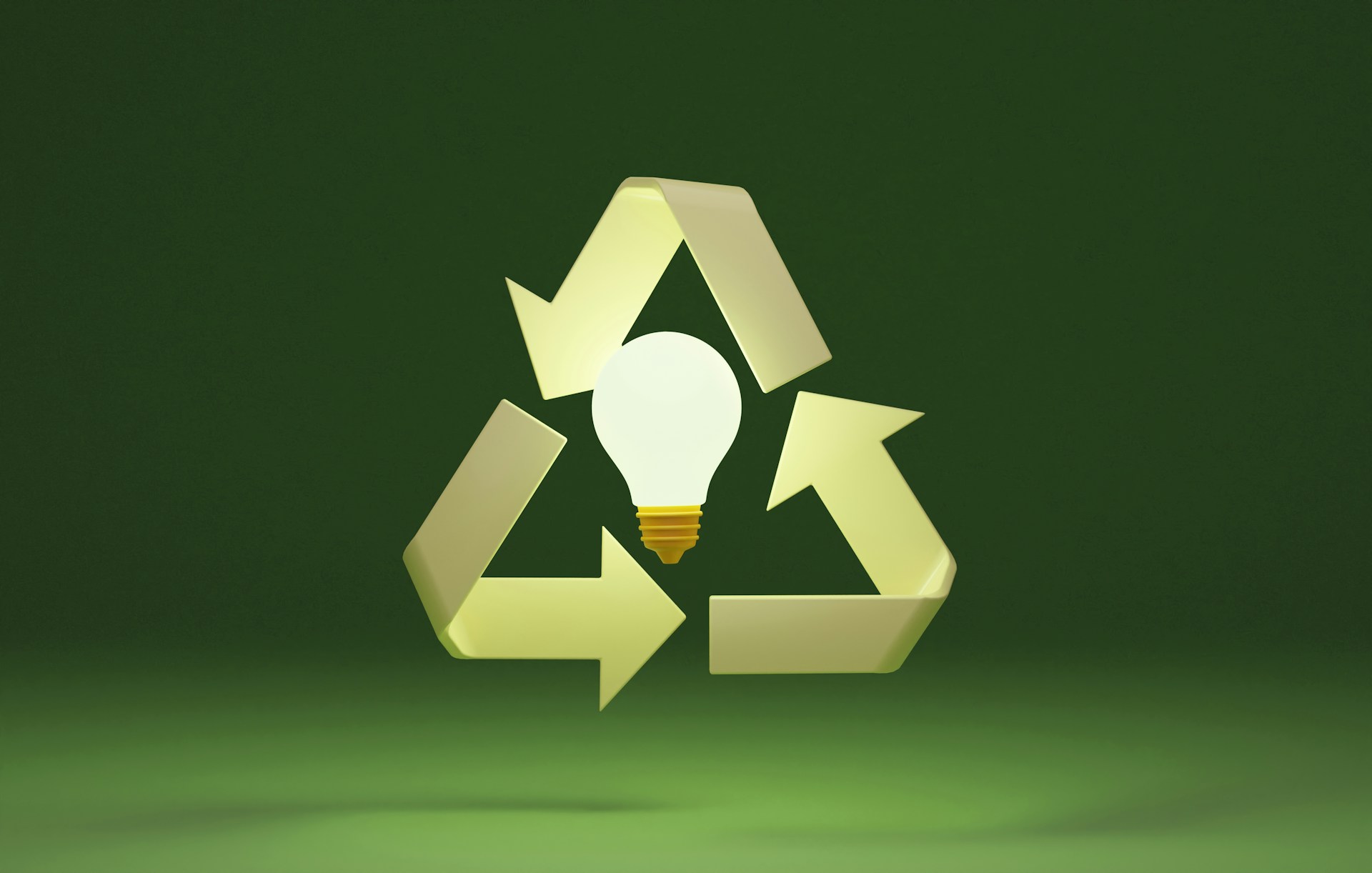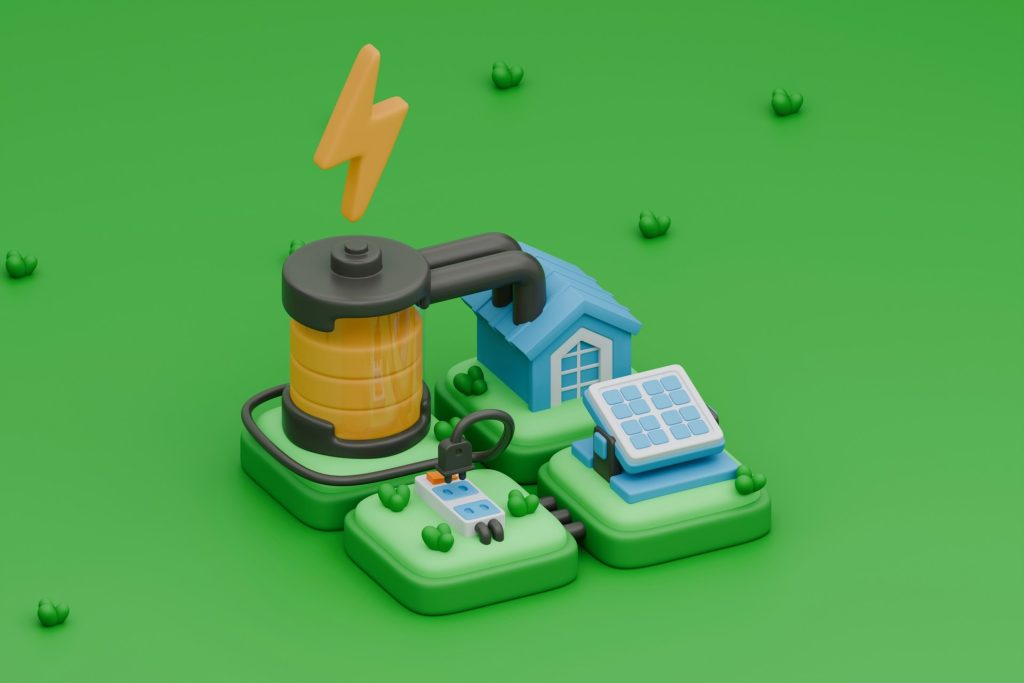Hey there! Today, we’re diving into the world of biodegradable electronics. You’ve probably heard the buzz about these eco-friendly gadgets promising to revolutionize the tech industry. But how sustainable are they really? Let’s break it down.
What Are Biodegradable Electronics?
First off, let’s clear up what we’re talking about. Biodegradable electronics are devices made from materials that can break down naturally in the environment. This means less e-waste piling up in landfills, which sounds fantastic, right? Traditional electronics can take hundreds of years to decompose, leaking harmful chemicals into the soil and water. So, the idea behind biodegradable electronics is pretty appealing.
The Materials: What’s Inside?
So, what exactly makes up these futuristic, biodegradable electronics? Let’s peel back the layers and explore the fascinating materials that go into making these eco-friendly devices.
Organic Substrates
The backbone of many biodegradable electronics is the substrate, essentially the “skeleton” of the device. Unlike traditional electronics that use plastic or glass substrates, biodegradable versions often use organic materials. Here are a few notable ones:
-
Cellulose: Derived from plant fibers, cellulose is a renewable and biodegradable material. It’s flexible, which makes it perfect for wearable electronics and other devices that need to bend or stretch.
-
Starch: Yes, the same stuff found in potatoes and corn! Starch-based substrates are gaining popularity because they’re cheap and biodegradable. They can be processed into films that serve as a base for electronic circuits.
Conductive Materials
For an electronic device to function, it needs conductive pathways. Traditional metals like copper or gold are great conductors but aren’t biodegradable. Researchers have turned to more sustainable options:
-
Graphene: This wonder material is not only incredibly strong and flexible but also highly conductive. While not biodegradable in the traditional sense, graphene can be produced in an eco-friendly manner and incorporated into biodegradable substrates.
-
Silk Proteins: Silk, produced by silkworms, can be processed into a form that conducts electricity. It’s biodegradable, biocompatible, and can be used in sensitive biomedical applications.
-
Carbon Nanotubes: These cylindrical molecules are excellent conductors and can be integrated into biodegradable substrates. Although they don’t degrade quickly, they can be produced sustainably and incorporated into designs that minimize environmental impact.
Semiconductors
The heart of any electronic device is its semiconductors, which control the flow of electricity. Traditional semiconductors like silicon aren’t biodegradable, so researchers are exploring alternatives:
-
Organic Semiconductors: Made from carbon-based molecules, these semiconductors can be designed to degrade under certain conditions. Polymers like polyaniline and polythiophene are being researched for their potential in biodegradable electronics.
-
Proteins and DNA: Believe it or not, biological molecules like proteins and DNA can function as semiconductors. These materials are still in the experimental stage but show promise for future applications.
Insulators
Insulators are materials that prevent the flow of electricity where it’s not wanted. In biodegradable electronics, finding suitable insulators is crucial:
-
Natural Waxes: Beeswax and other natural waxes can act as insulators. They’re biodegradable and can be sourced sustainably.
-
Plant-Based Polymers: Polymers derived from plants, such as polylactic acid (PLA), are excellent insulators and degrade over time without harming the environment.
Batteries
Powering biodegradable electronics requires eco-friendly energy sources. Traditional lithium-ion batteries are far from green, so here are some innovative alternatives:
-
Biodegradable Batteries: These batteries use materials like paper, cellulose, or biodegradable polymers as the substrate. They can be coupled with organic or metal-free electrodes.
-
Saltwater Batteries: These use non-toxic, natural salts and water to create a charge. They’re safer for the environment and can be designed to decompose.
Encapsulation Materials
To protect the delicate components of electronic devices, encapsulation materials are used. These materials need to be both protective and biodegradable:
-
Gelatin: A natural product derived from collagen, gelatin can be used to encapsulate electronic components. It’s biodegradable and biocompatible.
-
Chitosan: Sourced from the shells of crustaceans, chitosan is a versatile, biodegradable material that can protect electronic components from the environment.
The materials that make up biodegradable electronics are as diverse as they are innovative. From plant-based substrates to protein conductors and biodegradable batteries, each component is designed with sustainability in mind. While there’s still a lot of research and development needed to perfect these materials, the progress so far is promising. These advancements pave the way for a future where our tech habits no longer come at the cost of our planet.

The Pros: Why We Love Them
Alright, let’s get into the juicy bits—the reasons why biodegradable electronics are catching our eye and why we’re so excited about them. Here’s why we think they’re a game-changer:
1. Reduced E-Waste
One of the biggest perks of biodegradable electronics is their potential to reduce e-waste. Traditional electronics are notorious for piling up in landfills, where they can leach harmful chemicals into the soil and water. Biodegradable electronics, on the other hand, are designed to break down naturally, minimizing environmental pollution. Imagine a world where your old gadgets decompose into harmless substances instead of cluttering up the planet!
2. Lower Environmental Impact
Biodegradable electronics are made from eco-friendly materials that have a much lower environmental footprint compared to conventional electronics. These materials are often sourced sustainably and processed in ways that reduce carbon emissions and energy consumption. For instance, using plant-based polymers or organic materials means less reliance on petroleum-based plastics and metals that require intensive mining processes.
3. Innovation Boost
The drive to create biodegradable electronics has sparked a wave of innovation in materials science and engineering. Researchers are constantly discovering new materials and methods to make electronics more sustainable. This not only benefits the tech industry but also has broader applications in other fields like medicine and environmental science. The cross-disciplinary innovations born from this research can lead to breakthroughs we haven’t even imagined yet.
4. Safer Disposal
Disposing of traditional electronics often involves complex and hazardous processes to separate and neutralize toxic components. Biodegradable electronics simplify this process. Because they are made from non-toxic, natural materials, their disposal doesn’t pose the same risks to human health and the environment. This could lead to safer waste management practices and reduce the burden on recycling facilities.
5. Consumer Appeal
As more people become aware of environmental issues, there’s growing demand for eco-friendly products. Biodegradable electronics appeal to environmentally conscious consumers looking to make more sustainable choices. By offering products that align with these values, companies can tap into a loyal and growing market segment. Plus, consumers can feel good about their purchases, knowing they’re contributing to a greener future.
6. Biocompatibility
Biodegradable electronics often feature biocompatible materials, meaning they can be safely used in medical applications without causing harm to the body. For example, biodegradable sensors and implants can monitor health conditions and then dissolve harmlessly, eliminating the need for surgical removal. This is a significant advancement in medical technology, offering less invasive solutions for patients.
7. Potential for Sustainable Manufacturing
The shift towards biodegradable materials could revolutionize manufacturing processes. Sustainable manufacturing practices, such as using renewable energy sources and reducing waste, can be more easily integrated when the end products are designed with biodegradability in mind. This holistic approach can lead to greener supply chains and more sustainable industry standards.
8. Encouraging a Circular Economy
Biodegradable electronics support the concept of a circular economy, where products are designed to be reused, repaired, and recycled. By creating electronics that can decompose, we close the loop, ensuring that materials are continuously cycled back into the ecosystem rather than being discarded. This reduces the need for raw materials and minimizes waste.

The Cons: The Reality Check
While biodegradable electronics hold immense promise, it’s important to keep our feet on the ground and acknowledge the challenges and limitations that come with them. Here’s a reality check on some of the cons we need to consider:
1. Durability
One of the major concerns with biodegradable electronics is their durability. Traditional electronics are built to last, with materials designed to withstand various environmental stresses such as heat, moisture, and physical impact. Biodegradable materials, by their nature, are designed to break down over time. This can lead to challenges in ensuring that these devices can endure everyday use without degrading prematurely. For instance, a biodegradable phone case might start to break down after exposure to sweat, rain, or sunlight, which could be problematic for users who need their gadgets to be reliable and long-lasting.
2. Performance
Performance is another significant issue. Traditional electronic materials like silicon, copper, and plastic have been optimized over decades to deliver high performance. In contrast, many biodegradable materials are still in the experimental stage and may not yet match the performance standards set by conventional electronics. For example, the conductivity of organic semiconductors and the energy density of biodegradable batteries might not be on par with their traditional counterparts, leading to slower processing speeds, lower battery life, and reduced overall efficiency. This performance gap needs to be bridged before biodegradable electronics can fully compete in the mainstream market.
3. Cost
Currently, biodegradable electronics are more expensive to produce than traditional electronics. The materials and manufacturing processes involved are still relatively new and not yet scaled for mass production. This higher cost can be a significant barrier to widespread adoption. Consumers might be unwilling to pay a premium for eco-friendly devices, especially if they perceive that these devices offer lower performance or durability. Additionally, companies might hesitate to invest in the necessary research and development without a clear demand from the market.
4. Limited Availability
Given that the technology is still developing, biodegradable electronics are not as widely available as conventional electronics. This limited availability means that consumers don’t have many options to choose from, and it can be challenging to find biodegradable versions of certain devices. This lack of variety and accessibility can slow down the adoption of biodegradable electronics, as consumers might stick to more familiar and readily available products.
5. Recycling and Composting Infrastructure
For biodegradable electronics to have a meaningful impact, proper disposal infrastructure is crucial. The current recycling systems are designed for traditional electronics and might not be equipped to handle biodegradable materials effectively. Additionally, composting biodegradable electronics requires specific conditions that are not always met in standard composting facilities. Without the right infrastructure, these materials might not break down as intended, reducing their environmental benefits. Developing and implementing the necessary recycling and composting systems on a large scale is a significant challenge that needs to be addressed.
6. Consumer Behavior
Even the most sustainable products can fail to make a difference if consumer behavior doesn’t change. We live in a culture of constant upgrades and disposability, where the latest gadgets are often seen as status symbols. For biodegradable electronics to succeed, there needs to be a shift towards valuing longevity, repairability, and sustainability. Educating consumers about the benefits of biodegradable electronics and encouraging responsible usage and disposal is essential for these products to achieve their full potential.
7. Regulatory and Standardization Issues
As with any emerging technology, there are regulatory and standardization hurdles to overcome. Governments and regulatory bodies need to establish guidelines and standards for the production, use, and disposal of biodegradable electronics. This process can be slow and complex, and differing regulations across regions can complicate the global adoption of these technologies. Ensuring that biodegradable electronics meet safety, performance, and environmental standards is crucial for gaining consumer trust and market acceptance.
The Real Impact: Is It Enough?
Biodegradable electronics sound like a dream come true for the environment, but let’s take a closer look at their real impact. Are they enough to solve our e-waste problem and make a significant difference? Let’s dive deeper into the nuances of this question.
Lifecycle Considerations
To understand the real impact of biodegradable electronics, we need to consider their entire lifecycle—from production to disposal. Here’s what we should take into account:
-
Production: Manufacturing biodegradable electronics often involves sourcing natural materials, which can be less harmful than mining metals or producing plastics. However, it’s important to consider the environmental impact of growing, harvesting, and processing these materials. For instance, large-scale cultivation of certain plants for biodegradable materials could lead to deforestation or excessive water use if not managed sustainably.
-
Energy Consumption: The energy required to produce biodegradable electronics can be significant. If this energy comes from fossil fuels, the environmental benefits might be offset. It’s crucial that the production processes become more energy-efficient and ideally powered by renewable sources to maximize their sustainability.
-
Use Phase: During their use phase, biodegradable electronics need to perform reliably. If they don’t, users might replace them more frequently, leading to increased consumption and waste. Ensuring that biodegradable electronics have a sufficient lifespan is essential to making them a truly sustainable option.
-
Disposal: The disposal process is where biodegradable electronics should shine. If designed correctly, they should break down into non-toxic components that don’t harm the environment. However, this relies on having the right composting or recycling infrastructure in place. Without it, these devices might end up in landfills, where they might not degrade as intended.
Current Infrastructure Challenges
The effectiveness of biodegradable electronics is heavily dependent on the existing waste management infrastructure. Here are some challenges:
-
Composting Facilities: For biodegradable electronics to break down properly, they need to be processed in composting facilities that meet specific conditions, such as the right temperature, humidity, and microbial activity. Many regions lack such facilities, meaning that even biodegradable materials might not decompose as they should.
-
Recycling Programs: Current recycling programs are tailored to handle traditional electronics. Biodegradable electronics might require different handling procedures, and updating these programs will take time and resources. Until then, there’s a risk that these eco-friendly devices won’t be processed correctly.
Consumer Behavior and Awareness
The impact of biodegradable electronics also hinges on consumer behavior. Here’s what needs to change:
-
Awareness and Education: Consumers need to be educated about how to dispose of biodegradable electronics properly. This includes knowing which facilities can handle them and understanding the benefits of choosing biodegradable options over traditional ones.
-
Shift in Consumption Patterns: Moving towards a culture of repair and reuse rather than constant upgrades is essential. Even biodegradable electronics aren’t a perfect solution if we continue to consume at the current rate. Encouraging consumers to value longevity and sustainability can amplify the benefits of biodegradable products.
Complementary Solutions
Biodegradable electronics are a piece of the puzzle, but they’re not the only solution. Here are some complementary approaches:
-
Circular Economy: Embracing a circular economy model where products are designed for reuse, repair, and recycling can significantly reduce waste. Biodegradable electronics fit into this model, but we also need robust systems to support other sustainable practices.
-
E-Waste Regulation: Stronger regulations and incentives for proper e-waste disposal can help mitigate the environmental impact of electronics. Policies that promote recycling and penalize improper disposal can drive better outcomes.
-
Technological Innovations: Ongoing innovations in materials science and engineering are crucial. Developing new materials that combine high performance with biodegradability, and improving the efficiency of production processes, will enhance the overall impact of biodegradable electronics.
So, are biodegradable electronics enough? They are a promising step in the right direction but not a standalone solution. Their real impact depends on addressing the lifecycle challenges, improving waste management infrastructure, shifting consumer behavior, and integrating complementary solutions.
While we’re excited about the potential of biodegradable electronics, it’s clear that a multifaceted approach is necessary to tackle the broader issues of e-waste and environmental sustainability. By continuing to innovate, educate, and invest in sustainable practices, we can move closer to a future where technology and environmental stewardship go hand in hand.
What’s Next?
The future of biodegradable electronics is both exciting and challenging. As we look ahead, there are several key areas that will shape the development and adoption of these eco-friendly devices. Here’s what’s next in the world of biodegradable electronics:
1. Research and Development
Continued investment in research and development is crucial. Scientists and engineers are hard at work exploring new materials, improving existing ones, and developing innovative manufacturing techniques. Here are some areas of focus:
-
Advanced Materials: Developing new biodegradable materials that offer better performance and durability is a top priority. For example, researchers are experimenting with advanced polymers, organic semiconductors, and bio-based nanomaterials to enhance the functionality of biodegradable electronics.
-
Hybrid Solutions: Combining biodegradable materials with traditional ones could offer a balance between performance and sustainability. Hybrid solutions might involve using biodegradable substrates with non-biodegradable, but recyclable, components, creating devices that are easier to disassemble and recycle.
-
Smart Degradation: One exciting area of research is designing materials that degrade on demand. Imagine electronics that only begin to biodegrade under specific conditions, such as exposure to a certain environment or trigger. This would ensure durability during use and controlled degradation after disposal.
2. Scaling Up Production
For biodegradable electronics to become mainstream, production processes need to be scaled up. This involves:
-
Cost Reduction: Making biodegradable electronics affordable is essential for widespread adoption. This requires optimizing manufacturing processes, finding cost-effective materials, and achieving economies of scale.
-
Manufacturing Infrastructure: Building the necessary infrastructure to produce biodegradable electronics on a large scale is a significant challenge. This includes creating specialized production lines and facilities equipped to handle the unique requirements of biodegradable materials.
3. Policy and Regulation
Government policies and regulations will play a critical role in shaping the future of biodegradable electronics. Key areas include:
-
Standards and Certifications: Establishing industry standards and certification processes for biodegradable electronics can ensure quality and safety. These standards would help consumers make informed choices and encourage manufacturers to adhere to best practices.
-
Incentives and Penalties: Governments can provide incentives for companies that invest in sustainable technologies, such as tax breaks or grants. Conversely, penalties for improper disposal of e-waste can drive better compliance with recycling and disposal guidelines.
-
Public Awareness Campaigns: Promoting awareness about the benefits and proper disposal methods of biodegradable electronics can drive consumer adoption and responsible behavior.
4. Waste Management Infrastructure
Improving waste management infrastructure is crucial for maximizing the benefits of biodegradable electronics. This includes:
-
Composting and Recycling Facilities: Developing facilities capable of processing biodegradable electronics is essential. These facilities need to provide the right conditions for effective decomposition and recycling of materials.
-
Collection Systems: Efficient collection systems for biodegradable electronics can ensure that these devices are properly disposed of and processed. This might involve dedicated drop-off points, collection drives, or partnerships with retailers.
5. Market Adoption and Consumer Behavior
Encouraging market adoption and changing consumer behavior are key to the success of biodegradable electronics. Strategies include:
-
Education and Awareness: Educating consumers about the environmental impact of their electronics choices and the benefits of biodegradable options is essential. This can be achieved through marketing campaigns, educational programs, and collaboration with environmental organizations.
-
Product Design and Aesthetics: Making biodegradable electronics appealing to consumers involves more than just sustainability. These products need to meet consumer expectations for design, performance, and usability. Attractive, high-performing devices will naturally drive adoption.
-
Corporate Responsibility: Companies can play a significant role by committing to sustainable practices and offering biodegradable options. Corporate responsibility initiatives and transparent reporting on environmental impact can build consumer trust and loyalty.
6. Innovation in Related Fields
Biodegradable electronics are part of a broader movement towards sustainable technology. Innovations in related fields can complement and enhance their development:
-
Renewable Energy: Integrating biodegradable electronics with renewable energy sources, such as solar panels or wind turbines, can create fully sustainable tech ecosystems.
-
Smart Packaging: Developing biodegradable packaging for electronics can reduce overall waste and align with the sustainability goals of biodegradable devices.
-
Circular Economy Models: Embracing circular economy principles, where products are designed for reuse, repair, and recycling, can amplify the benefits of biodegradable electronics.
Conclusion
The journey towards a future dominated by biodegradable electronics is full of opportunities and challenges. Continued innovation, supportive policies, improved infrastructure, and consumer education are all critical components. By addressing these areas, we can pave the way for a more sustainable tech industry that not only reduces e-waste but also promotes a healthier planet.
For those eager to stay updated on the latest advancements and future trends in biodegradable electronics, this insightful article provides a comprehensive overview. Together, let’s embrace the future of sustainable technology and make informed choices that benefit both us and the environment.




